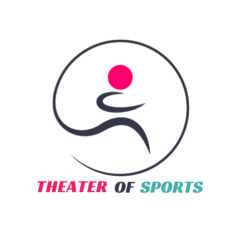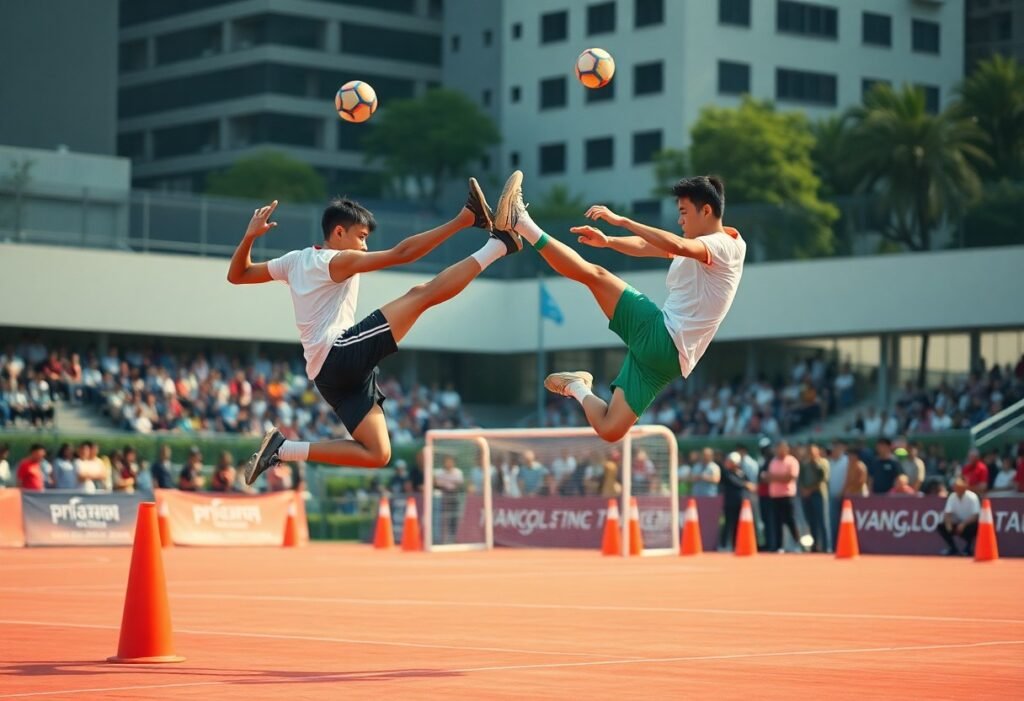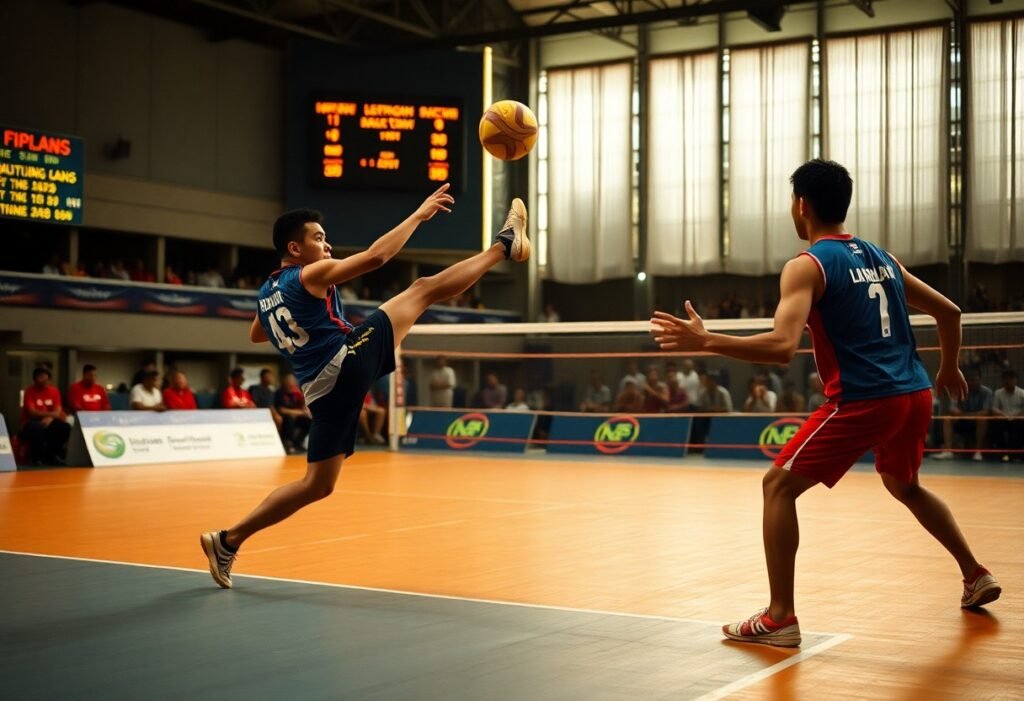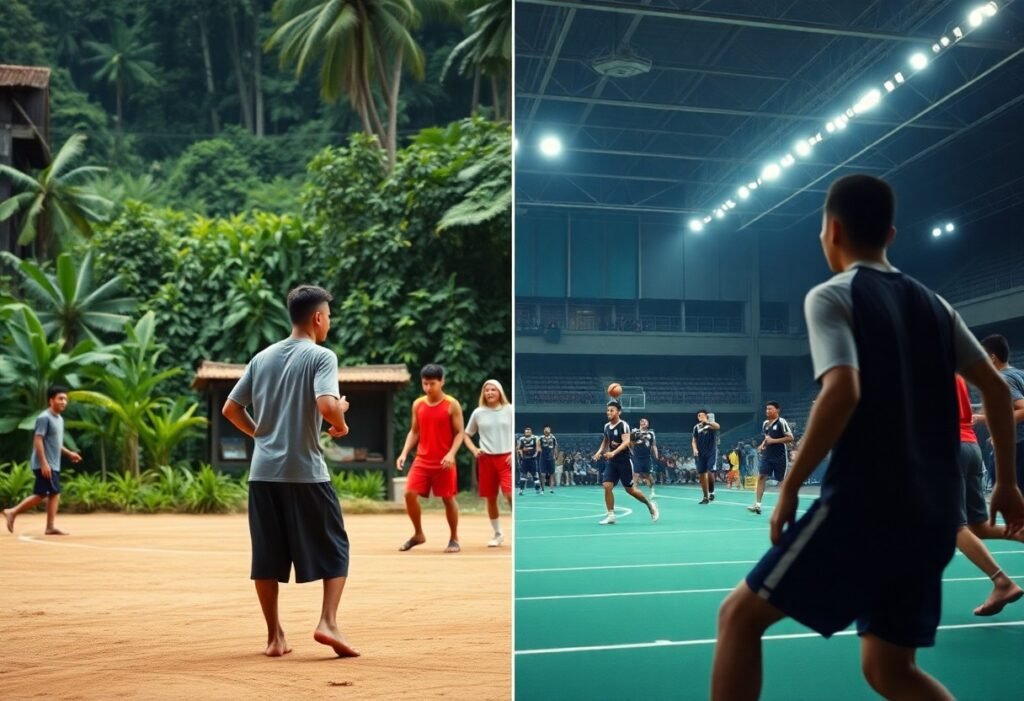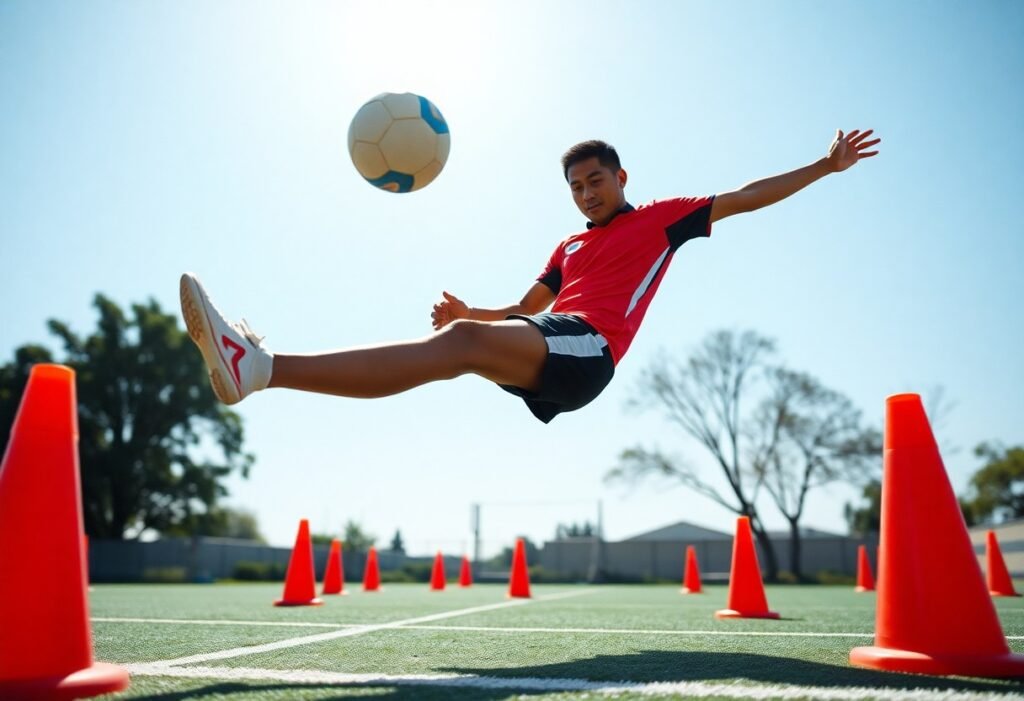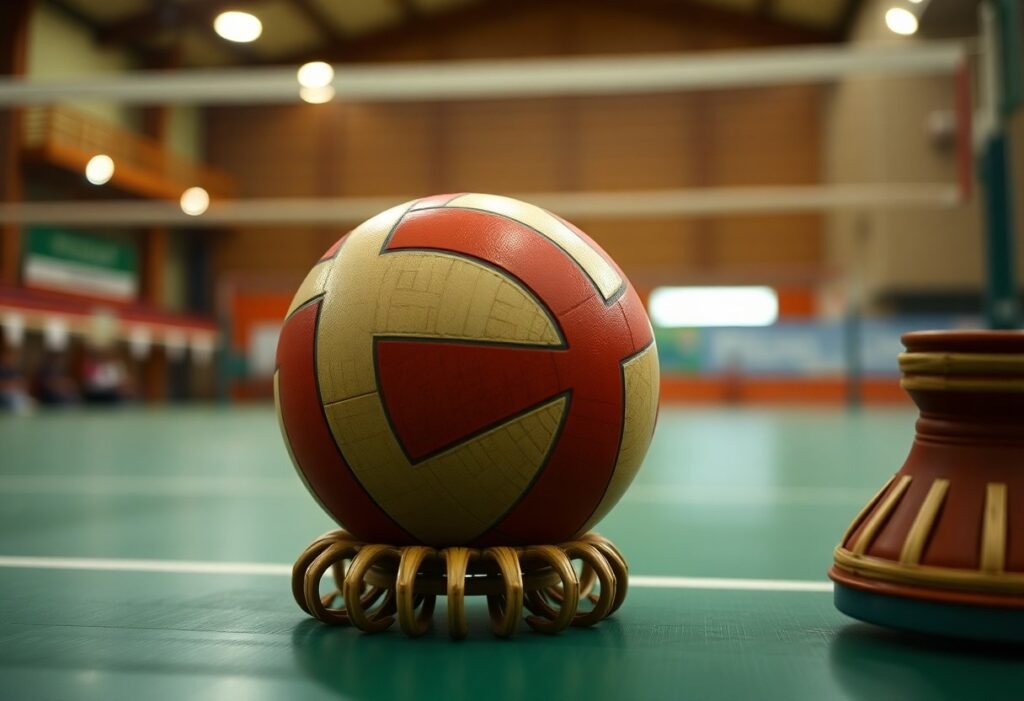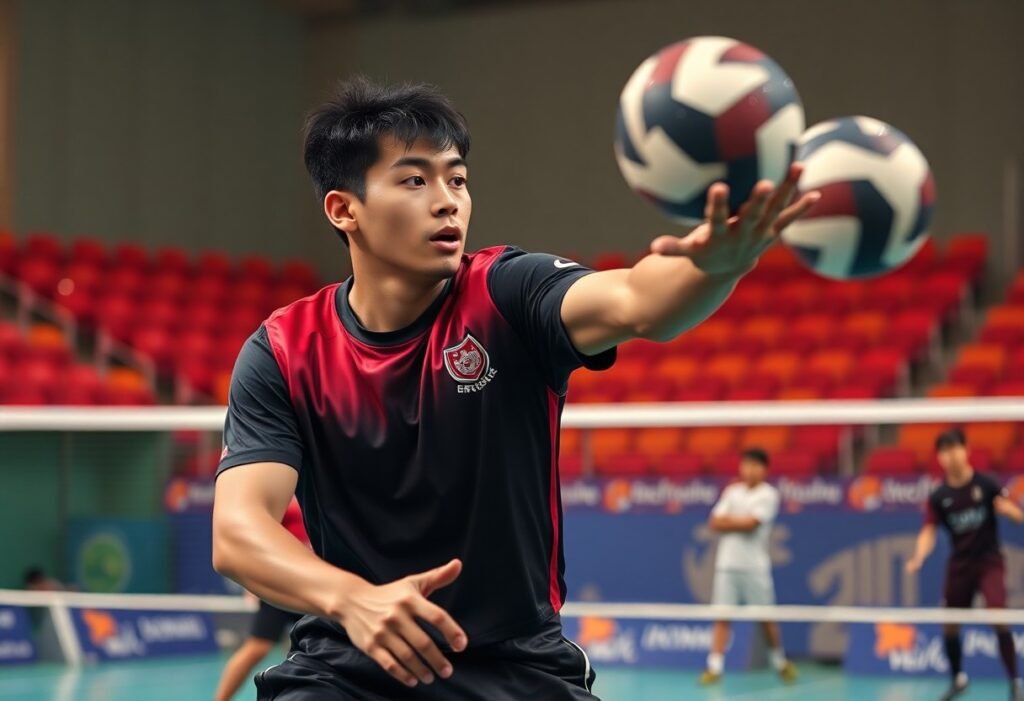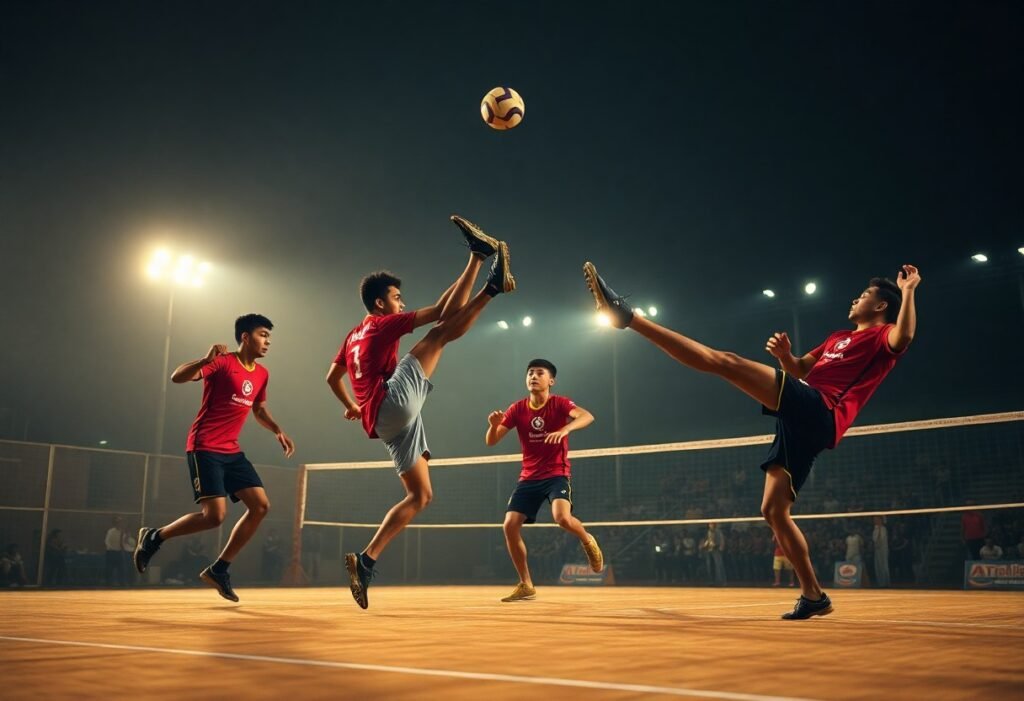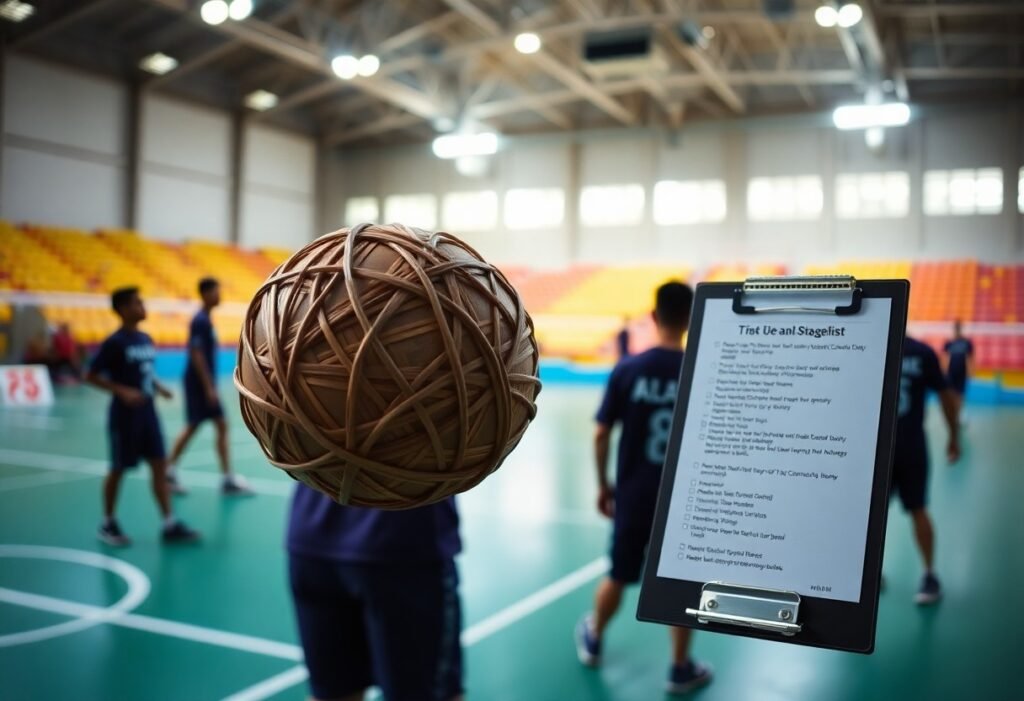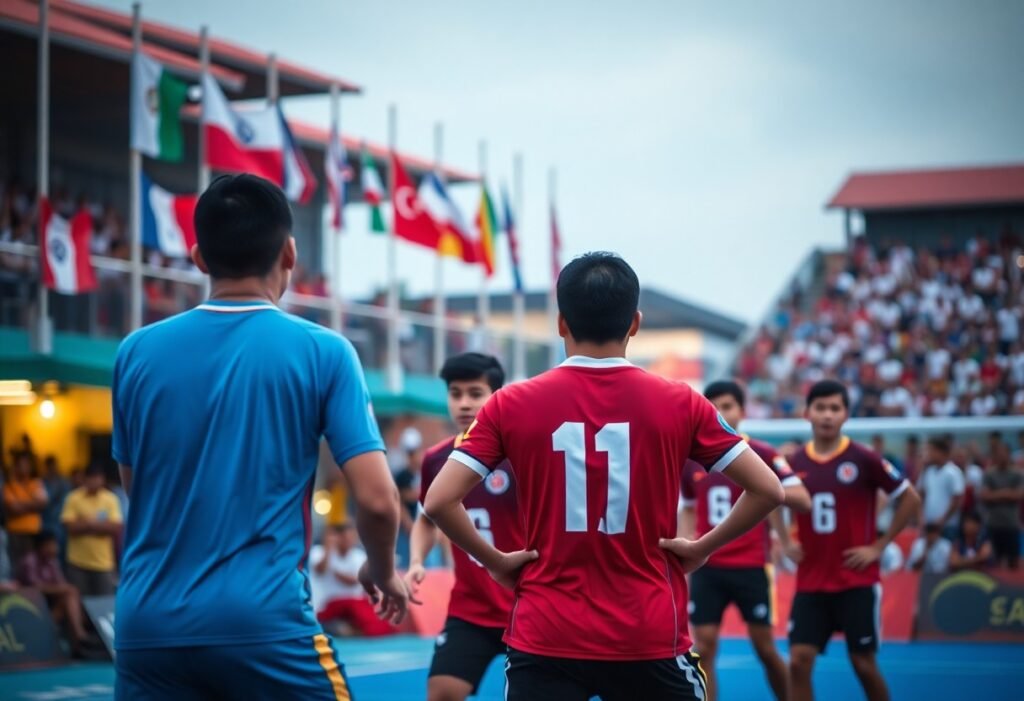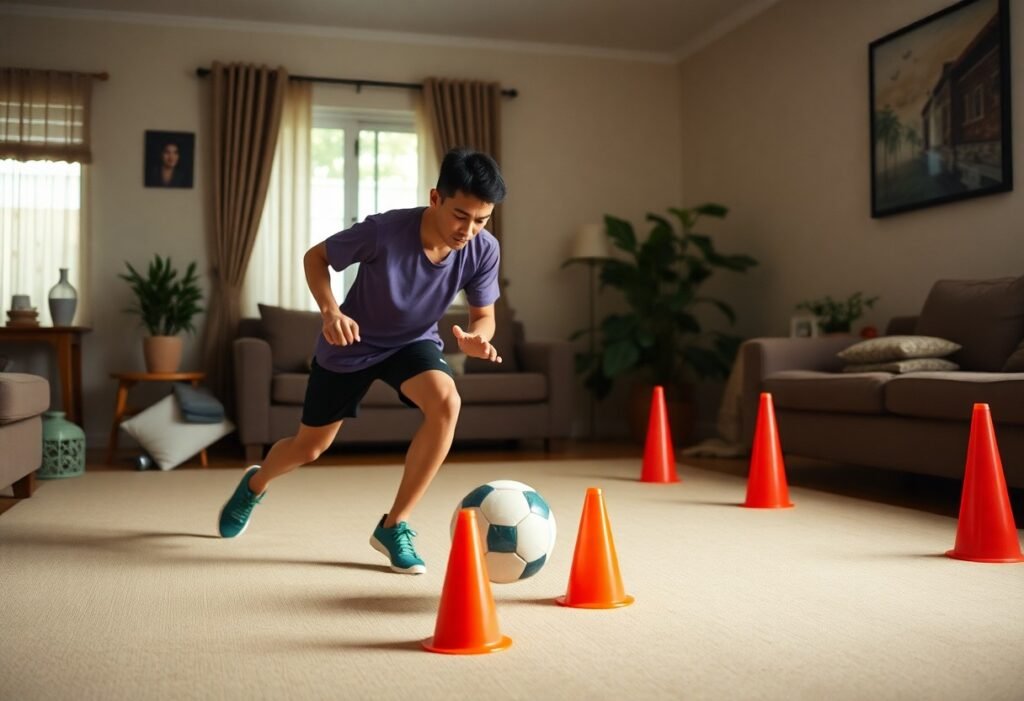You have the opportunity to elevate your Master Sepak Takraw game with advanced strategies and targeted training drills designed for competitive play. In this post, you’ll explore a variety of techniques that can enhance your agility, precision, and teamwork on the court. Whether you aim to improve your serving skills or develop complex game tactics, these insights will empower you to outsmart your opponents and dominate in matches. Get ready to transform your training routine and take your performance to the next level.
Key Takeaways:
- Incorporate a variety of training drills that focus on agility, coordination, and precise ball control to enhance overall performance in competitive matches.
- Develop advanced game tactics that emphasize teamwork, including communication and strategic positioning, to improve synergy within the team and outmaneuver opponents.
- Implement video analysis of gameplay to identify strengths and weaknesses, allowing for targeted improvements and more effective adaptation in high-pressure situations.
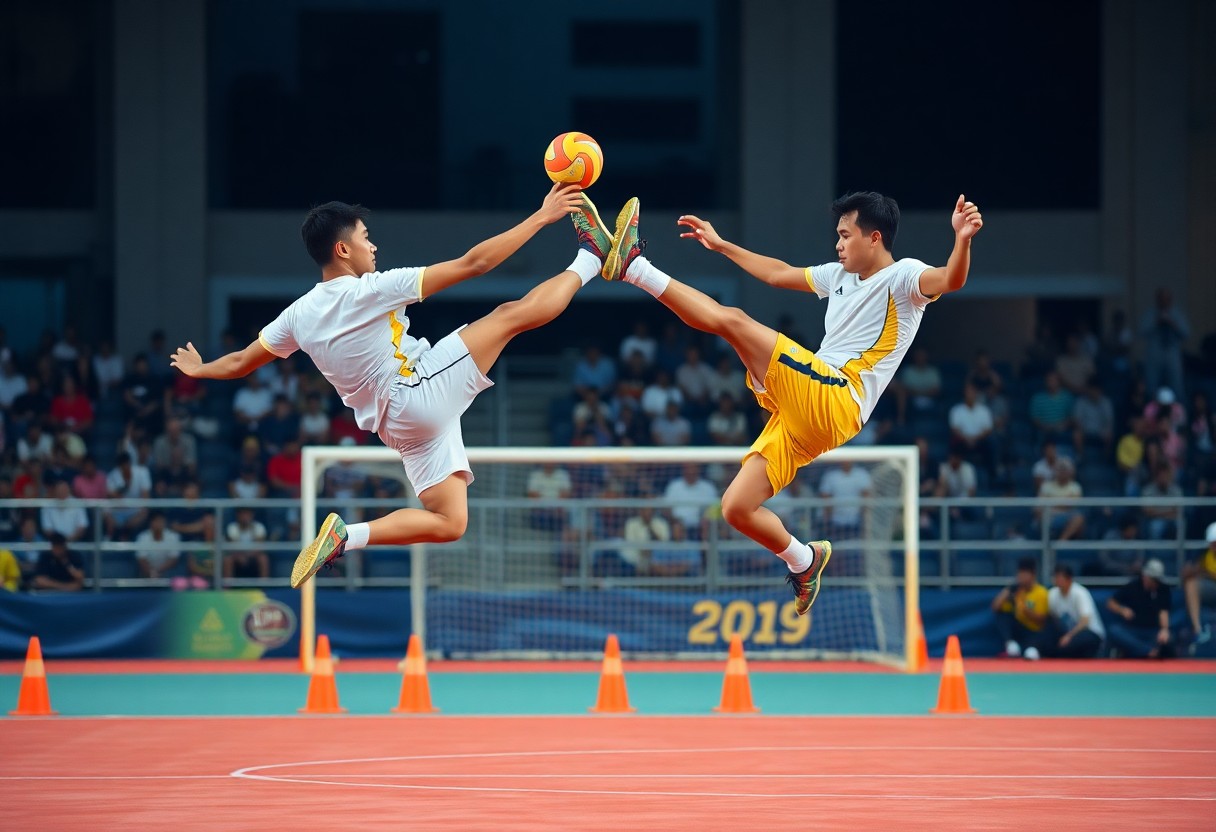
Understanding Sepak Takraw
The game of Sepak Takraw is a traditional sport originating from Southeast Asia, blending elements of volleyball and football. Played with a rattan ball, players use their feet, head, knees, and chest to keep the ball in play, showcasing acrobatic skills and teamwork. As the sport gains popularity globally, understanding its nuances can elevate your competitive play.
History and Evolution
Against the backdrop of Southeast Asian cultures, Sepak Takraw has roots that trace back to ancient times, evolving from royal pastimes to competitive sports. Over the years, it has gained international recognition, with standardized rules and organized tournaments contributing to its growth and the refinement of playing techniques.
Basic Rules and Gameplay
For an effective game of Sepak Takraw, it’s important to understand the fundamental rules. Teams consist of two players (doubles) or three players (singles) who must keep the ball within a specified area, scoring points by landing it on the opponent’s side. Each match is played to a pre-determined number of sets, with teams alternating serves and utilizing positional strategies.
Due to the unique nature of Sepak Takraw, understanding the scoring system is vital; matches are typically played to 21 points and each set requires a team to win with at least a two-point margin. Player rotations and serve sequences must be strictly followed, while net height adjustment can vary based on gender. Mastering these rules not only enhances your gameplay but also sharpens your strategic decisions on the court.
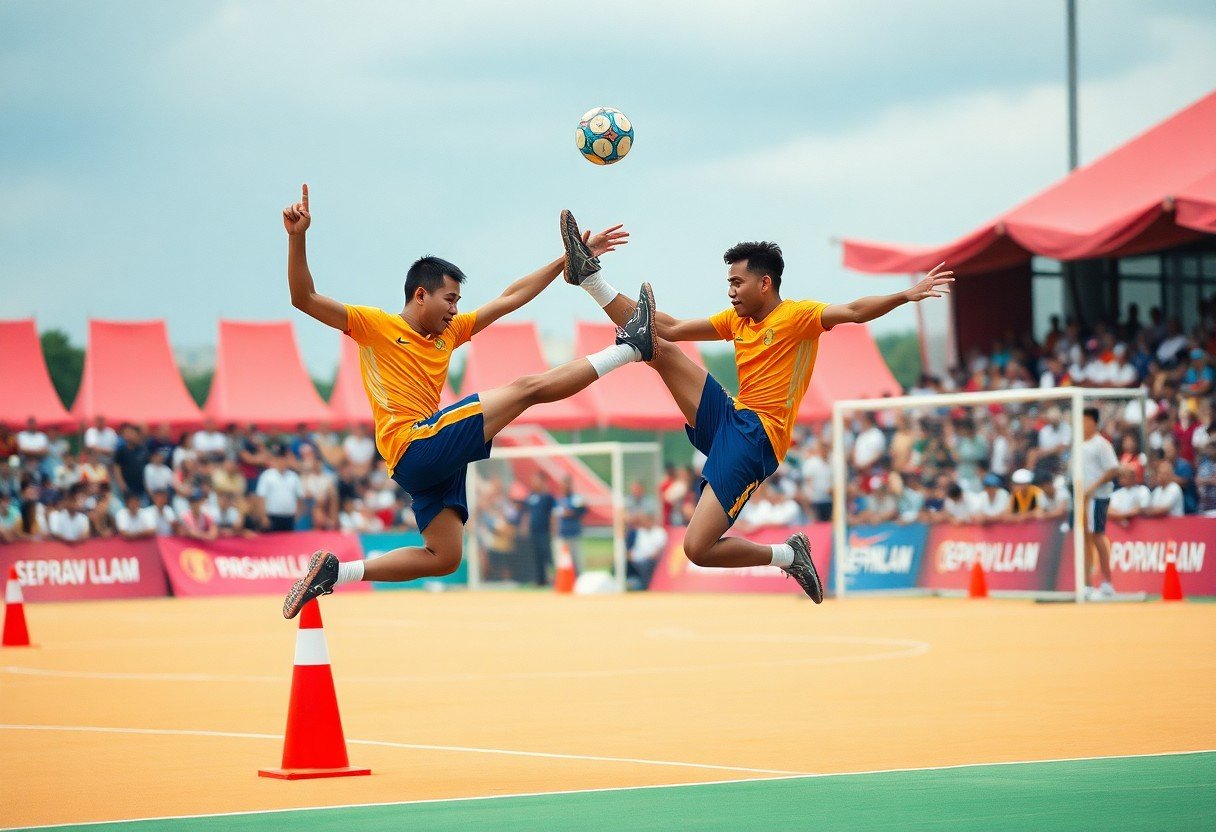
Essential Skills for Competitive Play
There’s a diverse set of skills required to excel in competitive Sepak Takraw. Mastering these necessary skills will significantly enhance your performance on the court and elevate your game to the next level. From footwork and agility to precise kicking techniques, having a solid foundation in these areas will better prepare you to face formidable opponents and capture victory in demanding matches.
Footwork and Agility
Essential for navigating the court effectively, your footwork and agility will dictate your ability to respond quickly to opponents’ plays. Engaging in drills that emphasize lateral movements, acceleration, and deceleration can markedly improve your overall responsiveness. Efficient footwork not only helps you stay balanced during plays but also enhances your capacity for executing kicks with precision.
Kicking Techniques
By mastering various kicking techniques, you can significantly elevate your game. Your ability to deliver accurate and powerful kicks will be a game-changer in competitive play.
Techniques such as the spike, set, and serve are fundamental components of successful Sepak Takraw. The spike demands agility and precise timing, while the set requires you to position the ball accurately for a fellow teammate’s strike. Additionally, a strong serve initiates the point and can greatly set the tone for the rally. Focusing on accuracy and power during these kicks will not only improve your individual performance but also create dynamic opportunities for your team on the court.
Advanced Training Drills
To elevate your habilidades in sepak takraw, implementing focused training drills is necessary. These drills can enhance your strength, agility, and tactical gameplay. Consider incorporating the following:
| Drill | Description |
|---|---|
| Footwork Ladder | Improves foot speed and agility. |
| Reaction Challenges | Enhances quick thinking and response time. |
| Serving Circuits | Builds accuracy and power in serving. |
| Target Practice | Focuses on precision in hitting. |
Individual Skill Development
Skill enhancement is vital for your personal growth in sepak takraw. Focus on key areas such as serving, receiving, and striking. Tailor your practice sessions to hone these skills individually, allowing you to develop consistency and form. Use drills that encourage repetition and self-assessment to track your progress effectively.
Team Coordination Exercises
Behind every successful match in sepak takraw is a well-coordinated team. These exercises are necessary in improving communication, timing, and trust among players. Regularly practice synchronized movements and strategies to ensure you and your team can execute plays seamlessly under game pressure.
Also, consider engaging in drills that promote effective communication and shared decision-making among team members. Exercises like rotating positions during practice can help every player understand different roles and responsibilities on the court. By working on these elements, you can strengthen your team’s chemistry, which can significantly impact your overall performance and elevate your chances of success in competitive play.
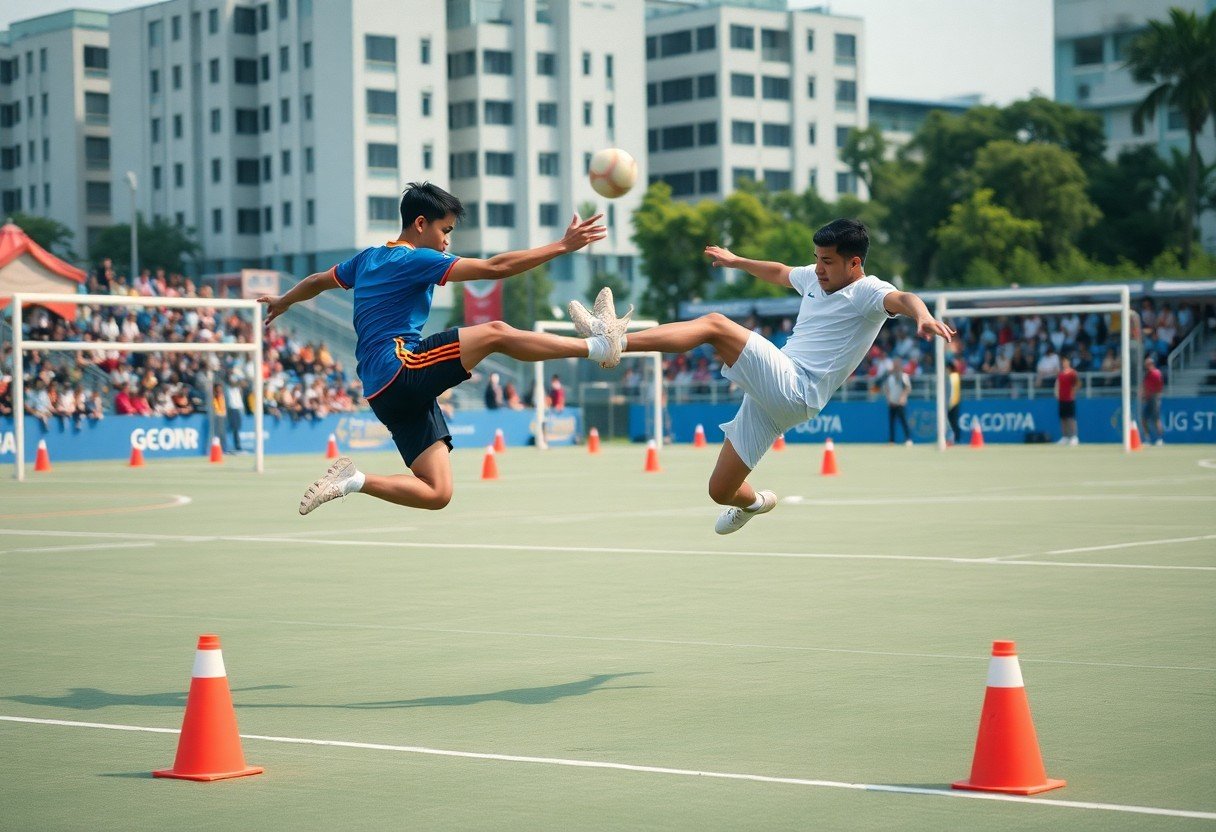
Game Tactics
Keep in mind that effective game tactics can significantly elevate your performance and decision-making during matches. Understanding the dynamics of your opponent’s play style, adjusting your formations, and masterfully coordinating with your teammates can help you gain a competitive edge. Effective communication and swift adjustments in your strategy are also vital for success on the court.
Offensive Strategies
By focusing on your offensive strategies, you can create opportunities to score points while putting pressure on your opponents. Utilize varied attacking strokes, such as powerful spikes and well-placed serves, to keep their defense guessing. Moreover, consider the angles of your shots and switching up timings, as unpredictability can lead to advantageous situations against your rivals.
Defensive Maneuvers
With effective defensive maneuvers, you can not only protect your half of the court but also create counter-attacking opportunities. Positioning yourself correctly, anticipating your opponent’s moves, and developing a solid block are imperative components to successful defense.
In fact, strong defensive maneuvers can turn the tide of a match in your favor. Quick reflexes and the ability to read your opponent’s intentions will enable you to execute precise interception techniques, which can disrupt their offensive rhythm. Additionally, maintaining a strong formation with your teammates ensures you cover every angle, making it challenging for your rivals to exploit gaps. Prioritizing your defensive skills will not only enhance your team’s overall performance but also empower you to transition smoothly into offense with confidence.
Analyzing Opponents
Many players underestimate the importance of analyzing opponents, but it’s a key component of successful competitive play. By understanding their strengths, weaknesses, and tendencies, you can tailor your game plan to exploit gaps in their strategy. Observing how opponents react under pressure and their preferred shots gives you a strategic advantage, allowing you to anticipate and counter their moves efficiently.
Scouting Techniques
After watching your opponents in previous matches, take detailed notes on their playing styles and tendencies. Pay attention to their scoring patterns, shot preferences, and defensive strategies. Focus on areas where they struggle, and make it a point to utilize those weaknesses when the match approaches. Utilize video analysis tools if possible to break down their gameplay further.
Adapting Strategies in Real-Time
Below the surface of every match, adapting your strategies in real-time is imperative for staying competitive. You must be attentive to how your opponents adjust throughout the game and pivot your tactics accordingly. This includes switching your formations, changing your shot types, or strategically positioning yourself to maximize your effectiveness against their current approach.
In fact, being able to quickly analyze and adjust during a match can make the difference between victory and defeat. You should constantly observe your opponents’ movement patterns, shot accuracy, and overall energy levels. This allows you to identify moments when they are particularly vulnerable or when they are thriving. By exploiting these critical moments, you can enhance your chances of outmaneuvering them and gaining the upper hand.
Mental Preparation and Focus
All competitive players must prioritize mental preparation to excel in Sepak Takraw. Developing a strong focus can enhance your decision-making and execution under pressure. Engaging in studies, such as The Effect of Training Method and Coordination on First Ball Receiving Skills in Sepaktakraw, can give you insights into training methods that improve mental sharpness and overall performance.
Building Competitive Mindset
Around your training, it’s imperative to cultivate a competitive mindset. This involves viewing each practice as an opportunity to sharpen your skills and gain an edge. Embrace challenges and maintain a determination to improve. A positive approach fosters resilience, allowing you to thrive even under the most intense competition.
Visualization Techniques
Any athlete can benefit immensely from visualization techniques. This powerful mental practice allows you to rehearse moves and strategies in your mind. By envisioning successful plays, you can boost your confidence and focus. As you integrate visualization into your routine, imagine executing complicated shots, serving seamlessly, and reading your opponents’ movements effectively.
The visualization process plays a significant role in shaping your performance on the court. Set aside time each day to close your eyes and picture yourself performing specific drills or matches. Envision not only the technical aspects of your game but also how you respond to pressure. This mental rehearsal prepares you for different scenarios, enhancing your ability to maintain composure and make quick decisions in real-time. By consistently practicing visualization, you foster a mental edge that can translate to significant gains in your actual gameplay.
To wrap up
As a reminder, mastering advanced Sepak Takraw strategies involves not only intense training drills but also tactical understanding of game dynamics. By focusing on your footwork, communication with teammates, and positioning, you can enhance your performance significantly. Regularly practicing these drills will ensure you stay ahead of the competition. Embrace these strategies to refine your skills and elevate your game to a higher level, allowing you to compete effectively and dominate the court.
FAQ
Q: What are some effective training drills for improving reflexes in Sepak Takraw?
A: Reflex drills can significantly enhance a player’s reaction time. One effective drill involves pairing players and having one player serve the ball while the other reacts to it. Players can also practice ‘target kicking’ by aiming at marked spots on the court, which helps improve not only reflexes but also accuracy. Incorporating plyometric exercises such as jump squats and lateral hops can further enhance agility and quickness on the court.
Q: How can players develop better teamwork on the court?
A: Teamwork is vital in Sepak Takraw for effective communication and coordination. Players can practice drills that require them to play in pairs, focusing on executing set plays together, such as synchronized serving and defending. Regular scrimmage games where players work on understanding each other’s movements and timing can foster a collaborative playing style. Additionally, discussing strategies during practice can enhance mutual understanding and game chemistry.
Q: What key strategies should players focus on during competitive matches?
A: Players should prioritize understanding their opponents’ strengths and weaknesses. Observing how opponents react during different plays allows players to adjust their strategies accordingly. Implementing variations in serving, such as utilizing both high serves and low drives, keeps opponents guessing. Additionally, players should practice defensive formations that allow quick transitions to offense, ensuring they can swiftly capitalize on scoring opportunities.
Q: How can players maintain their stamina and overall physical conditioning for competitive play?
A: Maintaining stamina requires a structured conditioning program that includes aerobic exercises, strength training, and flexibility routines. Incorporate high-intensity interval training (HIIT) sessions to boost cardiovascular endurance, along with strength-building exercises focused on the legs and core, which are critical for performance in Sepak Takraw. Stretching and yoga can improve flexibility, reducing the risk of injuries and enhancing mobility on the court.
Q: What mental strategies can players use to enhance their performance during high-pressure situations?
A: Mental toughness can be developed through visualization techniques, where players imagine successful execution of their plays. Practicing mindfulness can help manage anxiety, keeping players focused during intense matches. Setting clear, achievable goals for each game can also instill a sense of purpose. Players can enhance their composure by participating in simulated high-pressure situations during practice, allowing them to adapt their responses under stress.
